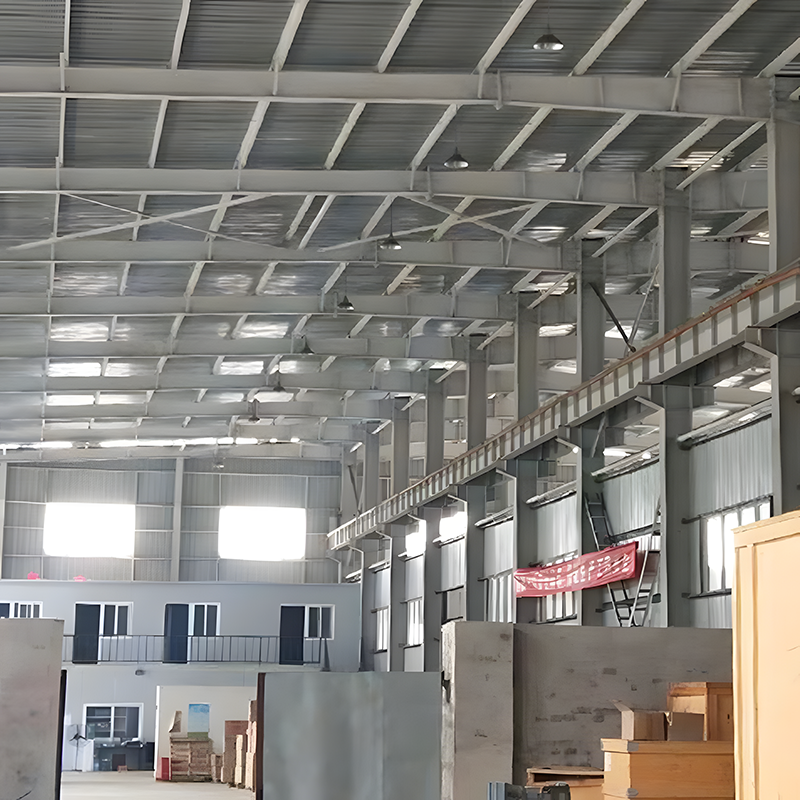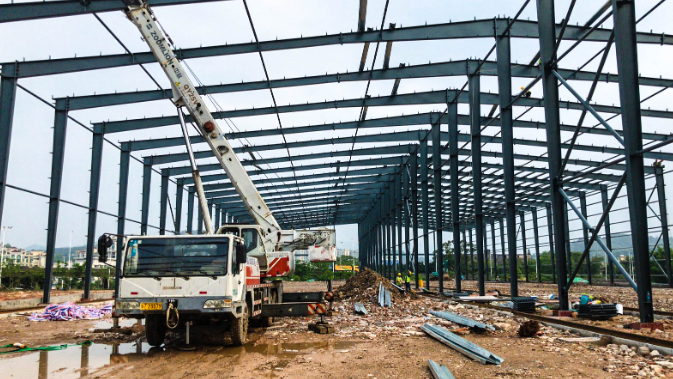Discussion on the Advantages of Steel Structure Factories
A steel structure factory refers to a workshop where load-bearing components are made of steel products. These components include steel columns, steel beams, steel structural embedments, steel roof trusses, steel roofs, and color-coated steel walls, such as roofs and walls made of color-coated steel sandwich panels. The walls of the workshop can also be filled with concrete blocks.

Advantages of Steel Structure Factories:
1.Cost-Effective and Eco-Friendly: Compared to traditional concrete factories, steel structure factories offer a lower cost per square meter. They possess advantages such as insulation, water-tightness, lightweight construction, environmental friendliness, faster construction timelines, and reduced initial investment in foundations.
2.Excellent Structural Integrity and Durability: Steel structure factories exhibit good overall performance with a reasonable layout. They demonstrate superior earthquake and wind resistance, providing a high safety coefficient. They also offer exceptional durability, comfort, and sound insulation. Steel structure factories have a long service life and are easy and quick to maintain.
3.Aesthetic Appeal and Recyclability: In terms of exterior design, steel structure factories can utilize colorful monolithic tiles and color-coated steel sandwich panels in various hues, lending them a beautiful, stylish, and modern appearance. The materials used in steel structure factories are recyclable, especially the steel beams and columns, which can achieve 100% recycling.

Additional Points for Consideration:
Flexibility in Design: Steel structures offer great flexibility in design, allowing for easy customization to meet specific industrial needs and aesthetics.
Faster Construction: The modular nature of steel construction allows for prefabrication off-site, which can significantly shorten the overall construction timeline.
Resilience to Natural Disasters: Steel's high tensile strength and ductility make it an ideal material for withstanding extreme weather conditions and natural disasters, ensuring the safety of personnel and equipment.
Sustainable Practices: The recyclability of steel not only reduces waste but also contributes to sustainable development by conserving natural resources and reducing energy consumption associated with material extraction and processing.
Energy Efficiency: With proper insulation and design, steel structure factories can be made energy-efficient, reducing operational costs and environmental impact.
By incorporating these additional points, the translation provides a comprehensive understanding of the benefits of steel structure factories, appealing to an American audience who may be interested in sustainable, cost-effective, and efficient industrial construction solutions.



